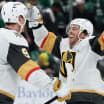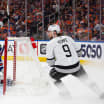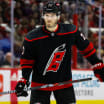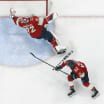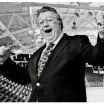In the case of Stamkos and the Lightning, the key is Nikita Kucherov.
Most teams employ a 1-3-1 structure on the power play. There are a number of variations to it, of course, but the basic premise is simple.
There is one quarterback, usually a defenseman, at the blue line.
There is a fluid line of three players even with the mid- to high-slot. The two on the flanks at the half-wall are on their off-wings, making them consistently available for one-time releases, whether they be shots or passes. The player in the middle is looked to shoot or feed the flanks, depending on the penalty-killing structure of the opponent.
The fifth player is down low and is normally relied upon to do the grunt work, usually getting the greasy goals, hacking in rebounds and screening the goalie.
When you have a polished finisher like Stamkos or Ovechkin on the prime flank, the goal is to move the puck quick enough that it ends up going to them in open space at or near the circle. It's tough to defend, even when penalty-killers start shifting in that direction.
It's almost impossible to stop the Tampa Bay power play when it's clicking because of Kucherov.
You want to focus your defensive system on Stamkos, who has six power-play goals this season? Go ahead. That creates more open space for Kucherov, who has 18 power-play points (five goals, 13 assists) this season and can shoot with the best of them.
When defenses try to anticipate a shot from the flank and go down early in an attempt to block it, that's when you see the player poised to shoot -- whether it be Kucherov or Stamkos -- pull back and try to go cross ice to the player on the other flank who will be open. There usually is an open seam there, and you can always be effective by going against the flow.
When I played in the 1980s, the most common power play structure was a 2-2-1: two defensemen at the point, two wings and a center down low.
Where it really seemed to morph into a 1-3-1 was in 2005 courtesy of the Capitals. Combining an elite shooter on one side in Ovechkin with an elite passer like Nicklas Backstrom on the other proved to be a lethal combination.



